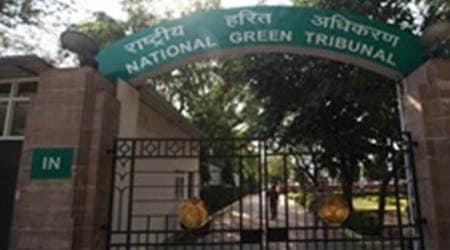 Weeks before the festival, farmers who cultivate vegetables on the floodplains were asked to leave.
Weeks before the festival, farmers who cultivate vegetables on the floodplains were asked to leave.
Differing from the NGT-appointed expert committee which had said that the three-day festival held by Sri Sri Ravi Shankar’s Art of Living (AOL) Foundation in March last year had “completely destroyed” the Yamuna floodplains, an action plan for its restoration, submitted by the Delhi Development Authority, has said there is “no compaction”, “no significant…wetland” and “no debris” at the site. Last week, the bench, headed by National Green Tribunal chairperson Justice Swatanter Kumar, had formed a committee directing the DDA to nominate a “very senior officer” as a member, along with one chief engineer each from the irrigation departments of Delhi and Uttar Pradesh. The committee was asked to come up with an “action plan” to restore the floodplains.
It had asked this committee to take into account the findings of an expert panel the NGT had constituted months after the event, which had found that the festival “completely destroyed” the riverbed, and had put the cost of restoration to be over Rs 42 crore. But the report submitted by the DDA to the bench Friday found the same area to be “fully covered with grass, along with saplings/seedlings of various tree species here and there”, and argued that such “grass and natural regeneration of seedlings (was) not possible on compacted soil”. The committee also maintained that no “heap of debris” was seen.
The report proposed assessment of compaction at the site once the water recedes after monsoon, and “if compacting or debris is found”, then those areas can be “de-compacted by ploughing” or “dumping excavated material along the approach road”. It added, though, that such submerged areas were likely to have “fine sand” and “fine sand is compacted fully as soon as it is submerged in water”.

Further, it added that “the area was also under water in small depressions in majority of the area where function was held” but “no significant size of wetland/water body was noticed by the committee in the area used by AOL”.
Earlier, Google Earth images, purportedly showing damage to the floodplains, had been submitted to the court. Disputing these, the report said, “The difference of green area is due to the fact that the photographs taken… are of the monsoon period, hence the area is densely covered with grass.” It added that it is “evidently clear” from these images, which are “in succession” of the AOL event, “that the grass has come on the AOL site during the just succeeding monsoon”. It concluded that “it is evident that no wetland or water body is seen on the site prior to the event”.
On the eastern bank of the river, under the administrative control of the UP Irrigation Department, the report added that the site had been “used for parking vehicles on 15 hectare land” permitted by the department. It said the area was “used by farmers for raising agricultural crops prior to the function and at present also the site is under agricultural crops”.
Further, maintaining that “no compaction of soil was seen in the area”, the report reasoned that “many portions were ploughed out where soil was very loose and very healthy crops were standing on the ground. This is only possible if the soil is loose which can support the crop”.
